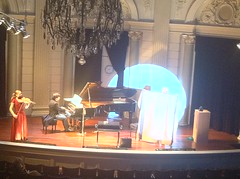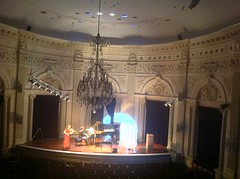Streamline Media is a recently formed company and concept dedicated to stream and record live music events over the internet in high quality resolution and therefore mostly apt to Classical, Jazz and/or traditional music.
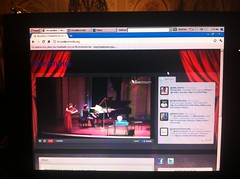
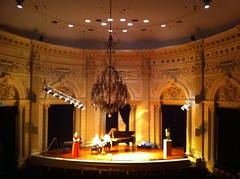
These genres are usually played acoustic (i.e. without electrical or amplification aid) which makes it rather difficult to capture soft dynamics and nuances on a live internet stream that suffers with heavy compression and slow buffering times. Until quite recently this type of transmission just didn’t make justice to the music.
This is where Streamlinemedia.org comes in with a specific set up of HD cameras and high quality microphones to guarantee the signals captured are of the best quality possible. Further is a custom build computer with enough processing power to handle these high resolution signals and transmission.
After capture and recording, broadcast is done using software Wirecast or similar which enables several options for optimal transmission of the event. Image resolution, frame rates and audio quality settings are chosen in accordance to internet download/upload speed connectivity and bandwidth.
Of course the higher the internet speed is the higher the quality of the broadcast will be but a compromise must be achieved as users may have slower internet connections causing the broadcast to buffer thus disrupting the live stream.
With this in mind a great event can be transmitted over the World Wide Web to be enjoyed by users sitting far away in their homes using their computers.
The capture of Daria van den Bercken piano recital which took place at the Kleine Zaal of Het Concertgebouw on the 30th November was done using 2 Canon HD cams and one extra Logitech webcam for back up and full view of the venue.
The audio was picked up with 2x Nakamichi cardioid condenser microphones in a stereo XY position using a single mic stand and also with the feed from the in-house Midas desk signal, which was picked-up with the ceiling stereo mics of the venue.
The place to mount the equipment was chosen next to where the patch connections and electricity sockets are and the regie usually stands, on the second floor of the zaal, as it gave a perfect full view of the venue and stage and acoustic conditions are optimal.
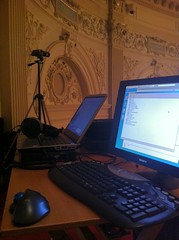
A trial run was done before at a rehearsal session so the placement had been tested which made the process of choosing a camera spot and angle much easier. Today´s technology allows for a small set up to be mobile and easily mounted and dismounted without interfering with the audience.
Video
Wirecast software allows for both option of record to hard-disk or record to server (i.e internet sites and applications like Livestream) so video capture is done simultaneously with transmission. Hard-disk recording keeps the original material in h.264 format preferably and transmission signal is set to flash format. At this stage image resolution and aspect ratio is crucial as once it is recorded there is no turning back. Video transmission on the other hand can be set to any resolution during, before or after.
Capturing is done using multiple cameras to allow highlighting of solo parts and other moments without ever loosing full view of the concert. Titles, credit details and logos are also placed during capture so a previous template should be created to avoid any mistake being included in the final content.
Audio
Audio should be captured at the highest possible resolution which for Streamline Media is set for now at 96Khrz 24bit WAV audio. This resolution is particularly helpful as it is exact multiple of 48Khrz, standard sample rate used in video coding so in the event of a post DVD production this would be ideal as it simplifies the digital down-sample process avoiding possible aliasing. Other sample rates may be use depending on circumstance.
This first stage of the audio capturing goes to an extra computer and hard-disk recorder and is than fed into the broadcast station via balanced outputs to prevent signal loss and noise introduction. Control over gain and volume is available at this stage as well as after at broadcasting.

